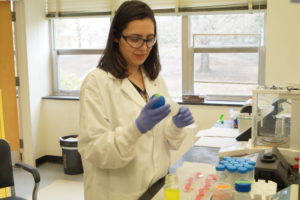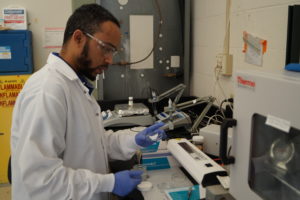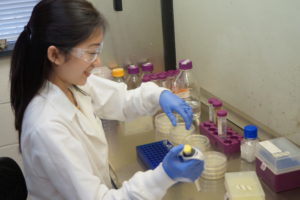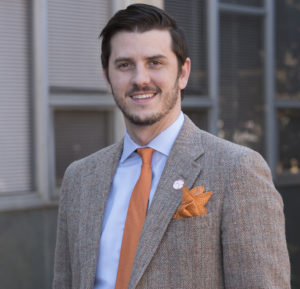 In the medical marketplace, private companies — IBM for one — are beginning to pilot “virtual physician assistants,” computers capable of making recommendations to clinicians, streamlining and improving their decision-making about treating patients for everyday sickness and injury. One day, the models being built by Marc Birtwistle and his Clemson research team may do the same thing for oncologists, or even for industrial scientists developing anti-cancer drugs in the pharmaceutical industry. It’s a ways off, but the basic science he is building may pave the way for such innovation.
In the medical marketplace, private companies — IBM for one — are beginning to pilot “virtual physician assistants,” computers capable of making recommendations to clinicians, streamlining and improving their decision-making about treating patients for everyday sickness and injury. One day, the models being built by Marc Birtwistle and his Clemson research team may do the same thing for oncologists, or even for industrial scientists developing anti-cancer drugs in the pharmaceutical industry. It’s a ways off, but the basic science he is building may pave the way for such innovation.
The Birtwistle lab combines computational research with experimental methods to better understand the behavior of cancer cells. Their goal: to better predict drug and drug-combination responses, which should result in better treatment therapies in the future.
“Ten years ago, simulating a single relevant cell process might have taken a day or so,” Birtwistle explains. “Now, we capture six to seven in a few minutes to an hour.” Working in the petascale — the benchmark for supercomputing speed: one quadrillion floating-point operations per second — allows their simulations to span a cross-section of virtual cancer patients while exploring the many uncertainties and combinations of drug regimens.
There’s no way to compare that work to what existed a decade ago, he says. “It was not even on the radar screen.” But supercomputing technology has made visible what was invisible prior. His group is interested in investigating to what extent computer simulation models can speed up their understanding of the complex problems this disease presents to clinical and industrial researchers. Currently, cancer precision medicine is based on matching genome and DNA data to targeted drugs. This has revolutionized cancer care, but it’s not always successful.
Birtwistle’s work uses genomic data of patients in simulation models that describe relevant biochemical networks where anti-cancer drugs actually work. Such models allow researchers to better understand mechanisms of drug action within the unique complexity of an individual’s tumor (namely brain tumors, though the lab works with a variety of cells and cancers). Those findings might one day be used to create personalized treatment strategies — by knowing how a drug will act in a patient, how much and how often the drug should be given, and the potential for toxicity, among other factors.
“Most cancers will require combination therapy to be controlled,” Birtwistle says. “However, there are dozens to hundreds of drugs to choose from, making their combinations — not to mention questions regarding the order in which to give them, and their dosing — almost innumerable,” he says. “My research focuses on building simulation tools that allow us to more comprehensively explore drug combination possibilities, all while accounting for, to the best of our knowledge, the complexity present in an individual’s tumor.”
The eventual goal is twofold, Birtwistle explains. “One is clinical: precision medicine,” he says. Given a cancer patient, can they make recommendations for successful combination therapies? The second is industrial: Given a new potential anti-cancer drug, what patients should be included in clinical trials, and what existing drugs should be combined to achieve better outcomes?
Current therapeutic approaches can’t comprehensively account for the vast complexity of variables in an individual’s tumor, he says. Without high-performance computer resources such as the Palmetto Cluster, his research goals would be “next to impossible.”










